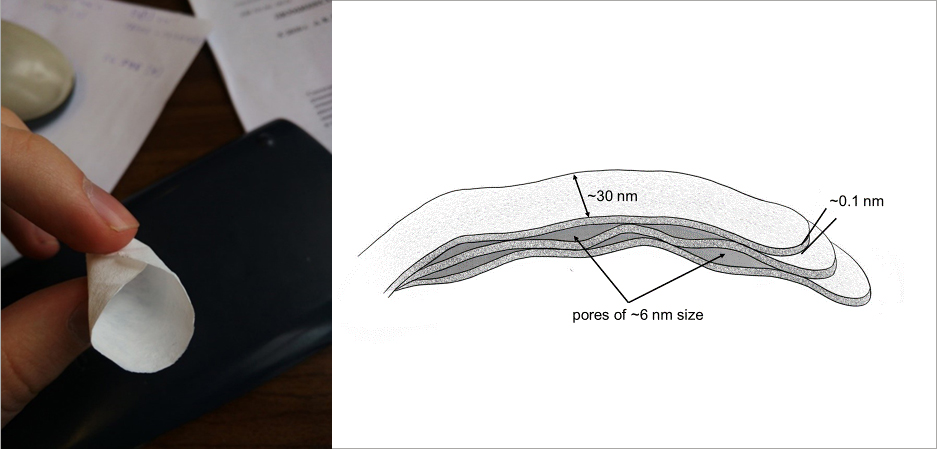New compounds of rare earth elements synthesised and described for first time
News, 13 October 2021
JINR scientists as part of a scientific team along with colleagues from research centres of Moscow and St. Petersburg have managed to synthesise and describe new compounds of rare earth elements. In the future, compounds possessing unique properties may allow the creation of innovative systems for assessing the state of air, as well as for medical diagnostics.
The need to create new chemical compounds and materials with specified functional properties is due to the modern challenges of society. The main role here, of course, is assigned to chemical scientists who rely on the required properties of the material to select its composition and synthesis conditions.
Thus, for example, many compounds of rare earth elements with organic acids have unique luminescent and magnetic properties. Surprisingly, the compounds of rare earth elements with lactic acid, which belongs to the so-called α-hydroxy acids, were predicted by theoretical chemists more than 50 years ago, but no one has yet been able to synthesise them in the form of individual compounds.
A team of scientists from Kurnakov Institute of General and Inorganic Chemistry (KIGIC), along with colleagues from St. Petersburg Nuclear Physics Institute of the NRC “Kurchatov Institute” (PNPI), HSE University, the Mendeleev University of Chemical Technology of Russia, and the Frank Laboratory of Neutron Physics at Joint Institute for Nuclear Research (FLNP JINR), have synthesised new crystalline yttrium lactate, as well as amorphous yttrium lactate, which has an extremely unusual structure.
The new compounds can serve as the basis for new luminescent test systems for the detection of organic compounds in the air. It is worth noting their high potential in the fields of diagnostics and treatment of various diseases due to the pronounced biological activity of many compounds of rare earth elements. “To understand the mechanism of such an activity, we need to know how ions of rare earth elements interact with organic substances involved in metabolism. One of these important substances is lactic acid, which is formed in the human body during the breakdown of glucose and is a marker of various disorders caused by hypoxia. Studies of the chemical interaction of rare earth elements with lactic acid began many years ago. But, oddly enough, no one has been able to obtain crystalline lactates before us. By the way, the salts of rare-earth elements with other α-hydroxy acids are known even less. We proposed a synthesis strategy and were able to isolate crystals of the first salt of a rare earth element and lactic acid – yttrium lactate,” comments Aleksey D. Yapryntsev, a researcher at the Laboratory for the Synthesis of Functional Materials and Processing of Mineral Raw Materials of the Institute of General Chemistry of the Russian Academy of Sciences.
The uniqueness of this work lies in the fact that with a slight change in the synthesis conditions, in particular, when a smaller amount of lactic acid is used, not crystals are formed, but amorphous gels consisting of the finest (about 30 nm) fibers. This result is extremely interesting, since “compounds of rare-earth elements rarely form gels, and gels with a fibrous structure have practically not been studied at all,” Head of the Laboratory for the Synthesis of Functional Materials and Processing of Mineral Raw Materials of the Institute of General Chemistry of the Russian Academy of Sciences Dr. Alexander E. Baranchikov notes. In the course of research on the new compound, it turned out that when yttrium lactate gels are dried, durable flexible material is formed, reminiscent of ordinary paper. A detailed analysis of the structure of the new material has been carried out, including by the method of small-angle neutron scattering on the YuMO spectrometer of the high-flux pulsed reactor IBR-2 at the Joint Institute for Nuclear Research. The results of this study have made it possible to study in more detail the discovered “lactate paper” and determine that it has a fibrillar structure, representing a set of 2d structures, namely, thin plates elongated in one direction. In the future the new form of the compound, its features and properties will be studied in detail. It will allow researchers to determine the areas of application of the new material.
In conclusion, it should be noted that this work is just another successful joint experience of interaction between scientists from KIGIC, PNPI, and JINR. According to a senior researcher at the DNICM FLNP JINR Candidate of Physics and Mathematics Yulia E. Gorshkova, currently a research programme is being successfully implemented at the IBR-2 scientific infrastructure within the framework of project No. 19-73-20125 “New hybrid and carbon aerogels – synthesis and analysis of the structure by small-angle scattering methods” funded by the Russian Science Foundation for the event series called “Conducting research on the basis of existing world-class scientific infrastructure” of the President’s programme of research projects implemented by leading physicists and engineers, including young scientists.
The results of the work have been published in the journal RSC Advances: A.D. Yapryntsev, A.E. Baranchikov, A.V. Churakov, G.P. Kopitsa, A.A. Silvestrova, M.V. Golikova, O.S. Ivanova, Yu.E. Gorshkova, V.K. Ivanov. The first amorphous and crystalline yttrium lactate: synthesis and structural features. RSC Adv. 2021, 11, 30195–30205, https://doi.org/10.1039/D1RA05923H.
